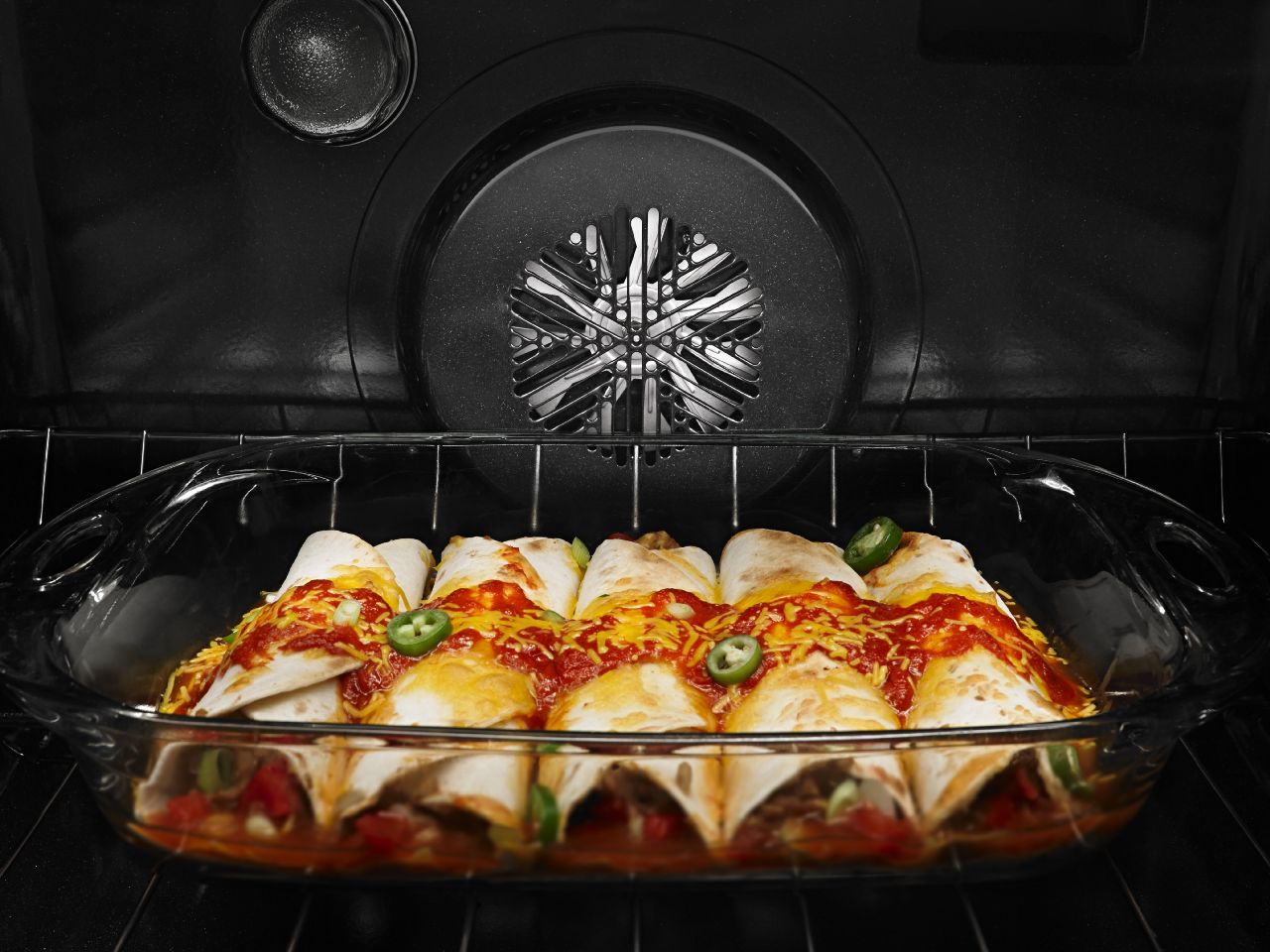
Your oven is an essential part of the kitchen and, for many people, an essential part of your cooking routine. The oven makes toast, casseroles, and desserts. It’s key to reheating leftovers evenly with a nice crisp instead of microwave sogginess or chewiness. So when your oven stops heating correctly (or never heated correctly) it’ can be a pretty big bummer.
Maybe you just moved into a home and are just now realizing that the oven is in poor condition. Or maybe the trusty oven that you’ve been using for years has started to falter or act erratically. Or not heat at all. Whatever the symptoms, an electric oven only has so many components which means it is possible to hunt down the cause of your oven’s malfunction. You can then choose to tackle the repairs DIY or call in an expert to get into your oven’s circuitry and make it work again.
In most cases, there are only four reasons why your electric oven isn’t heating correctly. Whether it’s under-heating, over-heating, or not heating at all, these four causes are the most likely answers to your problem.
1) Heating Elements are Aging or Broken
The first place to look is the heating elements. And we do mean literally look at them. An electric oven has two heating elements that glow red when electricity is run through them and they create heat. Believe it or not, troubleshooting your heating elements is often as simple as turning on the oven and taking a look.
Oven not heating evenly? Look closely at your heating elements. There’s a chance that you can actually see a mottle in the red, with darker sections representing where the element is failing to create even heat. Is the oven only heating from the top or bottom? You will definitely be able to see if one of the elements is out or very dim.
If your heating elements are mottled or faded, they will probably need to be replaced. A heating element that is completely out could be broken, or it could be an electrical connection failure further back in the system.
Be careful handling heating elements. If they are not slightly warmed, they can shatter with not much pressure.
2) The Door Isn’t Shutting Completely
The next place to look, because it’s easy to look here, is the oven door itself. If your oven isn’t getting hot enough, it could be that your oven door does not close fully or fit snugly into the housing. If an oven door can’t close, heat is constantly escaping and your oven’s programmed heat production will not be enough to fully cook your food at specific temperatures.
Oven doors can sit poorly for a number of reasons. The hinges may have been bent or the door warped by some previous activity. Many ovens have also been found to flex outward slightly after the first few bakings due to an imperfection in the shaped metal of the frame. If the oven or the door has warped with heat, they may not sit flush with each other anymore.
You have a few different options for fixing the door. If the problem is the hinges, you can replace the hinges or even bang your current hinges back into shape. Hinges are often the easiest problem to fix because door hinges are adjustable and a relatively small part if a replacement is necessary.
If the door has warped, some oven-owners have found that embedding a strut into the door’s frame can help pop it back into shape and fit again. If the oven itself has warped, you may be able to add an extra-thick seal to the door to help it trap heat even though the parts don’t align anymore. But if the oven and door are in too bad of shape, it may be time for a new appliance altogether.
3) Temperature Sensor is Misaligned or Broken
The next place to look is your temperature sensor. This is a small sensor that sticks through a hole in the upper back of your oven. The temperature sensor is how your oven knows when it is the ‘right’ temperature according to your settings. It is essentially what determines whether the elements fire to create more heat or not.
The temperature sensor should ‘float’ through the hole to get a clear reading. So if the sensor has shifted and is touching the edge of its hole or the side of the oven, this is bad news and it’s getting inaccurate readings. The sensor touching the oven side is most likely if you’ve been seeing under-heating because the sensor is picking up much more heat than just the temperature of the air inside the oven.
However, it’s also possible that the temperature sensor has lost accuracy or that it is entirely broken. In this case, you’ll need to replace the temperature sensor. If you’re careful, this is a fairly easy DIY replacement to do. Just don’t let the wires fall back through the hole into the housing while you do the switch.
4) There is an Internal Wiring Malfunction
Lastly, the most difficult and elusive potential problem is that the internal wiring of the oven is broken or malfunctioning somehow. A fuse could be blown, the wiring could be loose, or a control chip or panel inside the oven may no longer be working correctly. If the previous three problems were not your answer, then the process of elimination leaves you to conclude that it’s an internal electrical problem.
Unfortunately, it’s impossible to know just what has gone wrong unless you want to pull out your oven, open the back, and test each component for viability with a multimeter. This is likely what a professional repair technician will do if you call.
A multimeter has a few settings that can confirm whether an electrical piece is still conveying electricity the way it should inside the appliance control system. If you do want to do your own troubleshooting or learn by looking over the shoulder of a technician, this is how it works. The multimeter runs a very small current through its leads, which are placed at the “entrance” and “exit” of a part in the circuit. If the multimeter sends voltage and gets voltage back, the part is working. If it doesn’t get voltage back or the resistance is wrong, then the part is broken or malfunctioning.
Each part has its own qualifications for ‘working’ and ‘not working’ according to multimeter readings, which you can find out in the user’s manuals. Just remember, always unplug the oven before doing anything with its circuits or wiring. And wear work gloves to avoid being cut. Internal panels can be sharp at the edges.
—Is your oven not heating correctly? Hopefully, we’ve helped you hunt down the solution. If not, it’s time to call for a technician or dive in with a multimeter. Contact us today for more appliance diagnosis and repair insights or for a technician to take care of complex internal repairs.

Your Guide to Whirlpool Microwave Replacement Parts

What to Do When Your Kenmore Dryer Won’t Start

How to Resolve the LG Washer LE Error Code

Why Does My Oven Smell Like Gas? Causes and What to Do

Maytag Dryer Not Heating? Here’s How to Fix It

6 Common Reasons Your Speed Queen Dryer Isn’t Heating

8 Reasons Your Samsung Refrigerator Is Not Cooling

9 Most Reliable Washer and Dryer Brands

How to Get Ink out of Your Dryer the Easy Way

Why Is My Fridge Making Noise That Stops When the Door Is Open?

Frigidaire Refrigerator Error Code H1: Causes & Solutions

How to Clean a Dryer Vent Without Moving the Dryer

9 Reasons Your LG Refrigerator Isn’t Cooling

LG Refrigerator Not Making Ice? Here’s What To Do!


